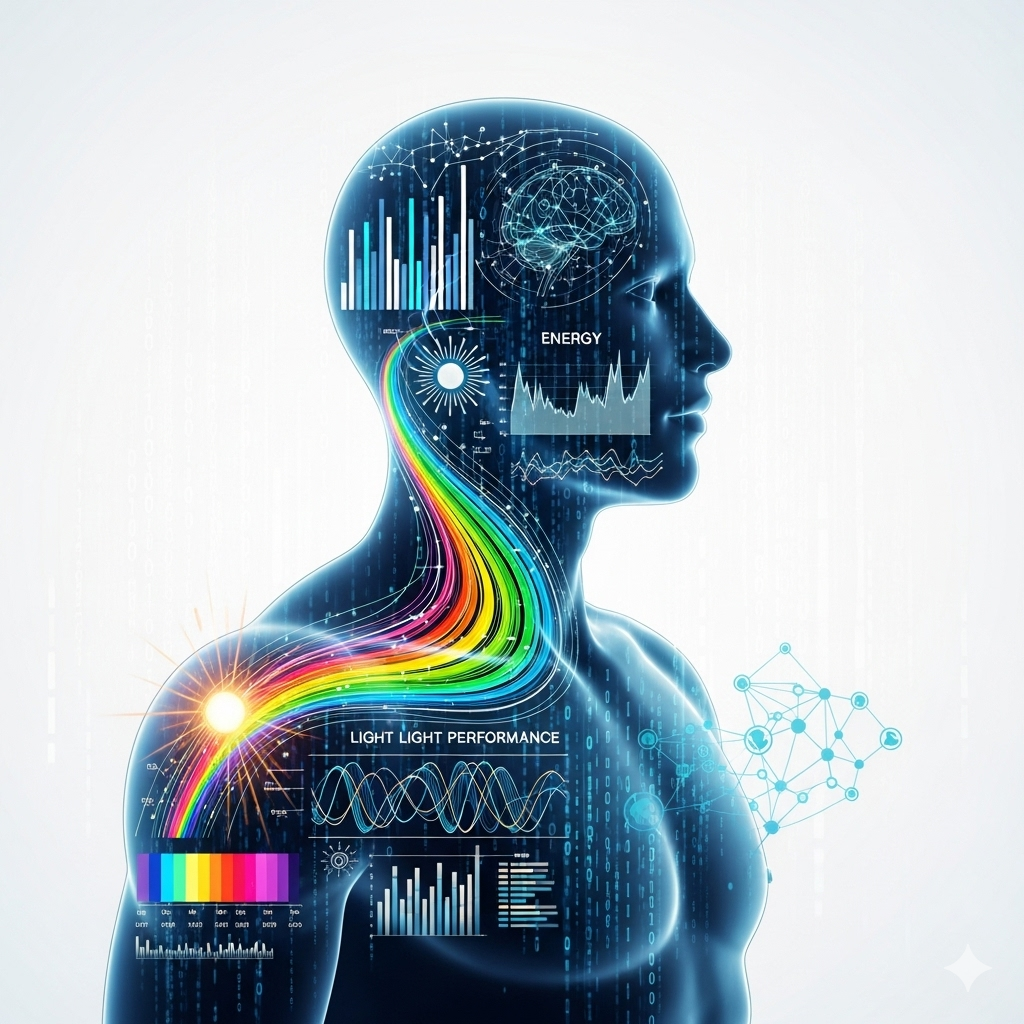In our modern world, artificial light dominates our lives, from the glow of our smartphones to the fluorescent hum of office buildings. While convenient, this constant exposure to unnatural light patterns can wreak havoc on our biology, disrupting our circadian rhythms, impacting our sleep, and ultimately diminishing our energy and performance. For the discerning biohacker, understanding and strategically manipulating light exposure is a powerful, yet often overlooked, tool for optimizing health, enhancing cognitive function, and boosting athletic prowess. This blog post will delve into the profound impact of light on our physiology and provide actionable biohacking strategies to harness the power of natural and artificial light to elevate your energy, sharpen your focus, and unlock your full potential.
The Science of Light and Your Biology
Light is far more than just illumination; it is a fundamental environmental cue that profoundly influences our internal biological clock, known as the circadian rhythm. Specialized photoreceptors in our eyes, distinct from those responsible for vision, detect light and send signals directly to the suprachiasmatic nucleus (SCN) in the brain, the master regulator of our circadian rhythm. This internal clock, in turn, orchestrates a vast array of physiological processes:
- Melatonin Production: Light, particularly blue light, suppresses the production of melatonin, the hormone that signals to our body that it’s time to sleep. Conversely, darkness stimulates its release.
- Cortisol Levels: Light exposure, especially in the morning, helps to regulate cortisol, the stress hormone, which should naturally be higher in the morning to promote alertness and gradually decline throughout the day.
- Energy and Alertness: Exposure to bright, blue-rich light during the day promotes wakefulness and cognitive function.
- Mood and Well-being: Light influences neurotransmitters like serotonin, impacting mood and potentially alleviating symptoms of seasonal affective disorder (SAD).
- Metabolism: Circadian rhythms play a role in regulating glucose metabolism and insulin sensitivity.
When our light exposure patterns are out of sync with our natural circadian rhythm—for example, prolonged exposure to artificial light at night or insufficient natural light during the day—it can lead to a state of circadian disruption. This disruption can manifest as sleep problems, fatigue, reduced cognitive function, and even long-term health issues.
Biohacking Your Light Environment for Optimal Performance
Optimizing your light environment involves a conscious effort to align your light exposure with your natural circadian rhythm. This means maximizing beneficial light during the day and minimizing disruptive light at night.
1. Embrace Morning Sunlight
This is arguably the most impactful and accessible light biohack. Within 30-60 minutes of waking up, expose yourself to natural outdoor light for at least 10-30 minutes. This signals to your SCN that the day has begun, effectively setting your internal clock. Even on cloudy days, outdoor light is significantly brighter and more beneficial than indoor light. This practice helps to:
- Boost Alertness: Suppresses melatonin and promotes cortisol release, helping you feel more awake and energized.
- Improve Mood: Enhances serotonin production.
- Regulate Sleep: By setting your clock early, it makes it easier to fall asleep at night.
2. Maximize Daytime Brightness
Throughout the day, especially if you work indoors, aim for bright, full-spectrum light exposure. Position your workspace near a window, take regular outdoor breaks, or consider using a full-spectrum light therapy lamp. This helps to maintain alertness, focus, and energy levels.
3. Minimize Evening Blue Light Exposure
As the sun sets, your body naturally prepares for sleep by increasing melatonin production. Exposure to blue-rich light from electronic screens (phones, tablets, computers, TVs) and some LED lighting after sunset can significantly disrupt this process, suppressing melatonin and delaying sleep onset. To mitigate this:
- Implement a Digital Sunset: Avoid screens for at least 1-2 hours before bedtime. If unavoidable, use blue light filtering apps (e.g., Night Shift, f.lux) or wear blue light blocking glasses.
- Dim Lights and Use Warm Tones: In the evening, dim your indoor lights and switch to warmer-toned bulbs (red or amber spectrum) that emit less blue light. Avoid overhead bright lights.
- Candlelight or Red Light Bulbs: For ultimate evening light hygiene, consider using candlelight or specialized red light bulbs in your bedroom.
4. Create a Pitch-Black Sleep Environment
Even small amounts of light can interfere with sleep quality. Ensure your bedroom is as dark as possible:
- Blackout Curtains: Invest in high-quality blackout curtains to block out all external light.
- Eye Mask: If curtains aren’t sufficient, a comfortable eye mask can ensure complete darkness.
- Cover Electronics: Cover any glowing LEDs or digital displays in your bedroom.
Advanced Light Biohacks for Athletes
For athletes seeking an extra edge, more advanced light biohacking strategies can be explored:
- Light Therapy Devices: Beyond general full-spectrum lamps, specialized devices can deliver targeted light exposure for specific purposes, such as improving mood or combating jet lag.
- Red Light Therapy (Photobiomodulation): As discussed in the recovery blog post, red and near-infrared light can stimulate cellular function, enhance muscle repair, reduce inflammation, and improve circulation. This can be used both pre- and post-workout.
- Circadian-Friendly Lighting Systems: Smart home lighting systems can be programmed to automatically adjust color temperature and brightness throughout the day, mimicking natural light cycles.
Conclusion: Illuminating Your Potential
Light is a fundamental, yet often underestimated, biohack for optimizing energy, performance, and overall well-being. By consciously managing your light environment—embracing bright, natural light during the day and minimizing artificial blue light exposure at night—you can synchronize your internal clock, enhance melatonin and cortisol regulation, and unlock a cascade of benefits for your physical and mental health. From improved sleep and increased energy to sharper focus and better athletic performance, the power of light is immense. Start by implementing simple changes like morning sunlight exposure and evening blue light reduction, and gradually explore more advanced techniques. By illuminating your potential through intelligent light biohacking, you’re not just seeing the world differently; you’re optimizing your biology to thrive.
References:
[1] Effects of light on human circadian rhythms, sleep and mood – PMC. Pmc.ncbi.nlm.nih.gov. Available at: https://pmc.ncbi.nlm.nih.gov/articles/PMC6751071/
[2] Good Light, Bad Light, and Better Sleep – National Sleep Foundation. Thensf.org. Available at: https://www.thensf.org/good-light-bad-light-and-better-sleep/
[3] The influence of blue light on sleep, performance and wellbeing in … Pubmed.ncbi.nlm.nih.gov. Available at: https://pubmed.ncbi.nlm.nih.gov/36051910/
[4] Photobiomodulation in human muscle tissue: an advantage in sports… Pmc.ncbi.nlm.nih.gov. Available at: https://pmc.ncbi.nlm.nih.gov/articles/PMC5167494/


